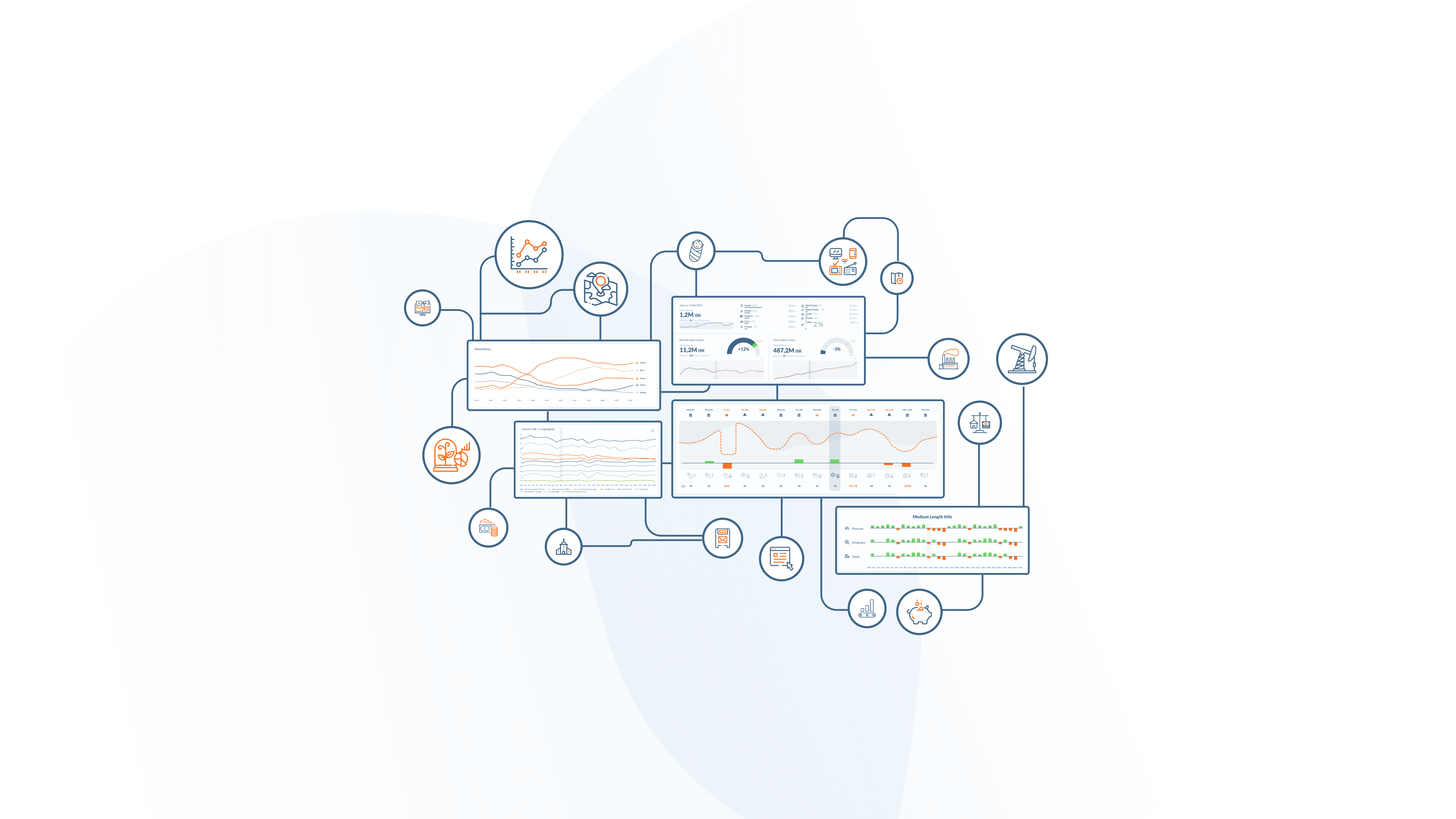

Stefán Baxter
CEO & Founder
May 3, 2024
Enhanced Demand Intelligence with Contextual AI
Truly Actionable Intelligence through Contextual Awareness
Introduction
If you're in the business of meeting customer needs (and let's be honest, who isn't?), you know that understanding demand is the cornerstone of success. What if I told you that the traditional ways of gauging demand are, well, a bit outdated? Enter Contextual AI, a technology that's redefining how we understand and respond to market demand. Let's dive in.
What's Wrong with Traditional Demand Forecasting?
Don't get me wrong, traditional demand forecasting methods have their merits. They analyze historical data, seasonal trends, and other internal metrics to predict future demand. But here's the catch: they often miss the bigger picture. They don't account for real-time external factors like market sentiment, competitor actions, or even global events. That's like trying to predict the weather by only looking out your window.
The Contextual AI Difference

Contextual AI takes demand intelligence to the next level by incorporating external, real-time data into the equation. Think of it as having an extra set of eyes and ears that are always tuned into what's happening around you. It's not just about what you've sold in the past; it's about understanding the current landscape to predict what you'll sell in the future.
How Does It Work?
Much like its applications in other sectors, Contextual AI in demand forecasting employs a mix of AI and machine learning techniques. These range from natural language processing for sentiment analysis to deep learning models that can interpret complex data sets. The goal is to create a more holistic view of demand that considers both internal metrics and external influences.
Real-World Applications
Here are some ways businesses are leveraging Contextual AI for enhanced demand intelligence:
Retail
Adapting inventory levels based on real-time social media trends, local events, and even weather forecasts.Manufacturing
Adjusting production schedules in response to supply chain disruptions or sudden changes in raw material costs.Hospitality
Modifying room rates and promotional offers based on local events, competitor pricing, and online reviews.Energy Sector
Predicting energy consumption patterns based on weather forecasts, local events, and even political climates.
The Challenges and the Road Ahead
Now, I'd be remiss if I didn't mention that Contextual AI is not without its challenges. Data privacy is a big one, and so is the task of integrating these advanced systems into your existing infrastructure. But the potential for more accurate, real-time demand forecasting is an opportunity that's hard to ignore.
Conclusion
In a constantly changing world, relying solely on traditional methods to gauge demand is like sailing a ship with outdated maps. Contextual AI offers a more nuanced, real-time approach that can adapt to the ever-changing market conditions. It's not just the future of demand intelligence; it's the here and now.
So, whether you're a decision-maker looking to get ahead or someone on the front lines of your business, Contextual AI is a tool you'll want in your arsenal.
Introduction
If you're in the business of meeting customer needs (and let's be honest, who isn't?), you know that understanding demand is the cornerstone of success. What if I told you that the traditional ways of gauging demand are, well, a bit outdated? Enter Contextual AI, a technology that's redefining how we understand and respond to market demand. Let's dive in.
What's Wrong with Traditional Demand Forecasting?
Don't get me wrong, traditional demand forecasting methods have their merits. They analyze historical data, seasonal trends, and other internal metrics to predict future demand. But here's the catch: they often miss the bigger picture. They don't account for real-time external factors like market sentiment, competitor actions, or even global events. That's like trying to predict the weather by only looking out your window.
The Contextual AI Difference

Contextual AI takes demand intelligence to the next level by incorporating external, real-time data into the equation. Think of it as having an extra set of eyes and ears that are always tuned into what's happening around you. It's not just about what you've sold in the past; it's about understanding the current landscape to predict what you'll sell in the future.
How Does It Work?
Much like its applications in other sectors, Contextual AI in demand forecasting employs a mix of AI and machine learning techniques. These range from natural language processing for sentiment analysis to deep learning models that can interpret complex data sets. The goal is to create a more holistic view of demand that considers both internal metrics and external influences.
Real-World Applications
Here are some ways businesses are leveraging Contextual AI for enhanced demand intelligence:
Retail
Adapting inventory levels based on real-time social media trends, local events, and even weather forecasts.Manufacturing
Adjusting production schedules in response to supply chain disruptions or sudden changes in raw material costs.Hospitality
Modifying room rates and promotional offers based on local events, competitor pricing, and online reviews.Energy Sector
Predicting energy consumption patterns based on weather forecasts, local events, and even political climates.
The Challenges and the Road Ahead
Now, I'd be remiss if I didn't mention that Contextual AI is not without its challenges. Data privacy is a big one, and so is the task of integrating these advanced systems into your existing infrastructure. But the potential for more accurate, real-time demand forecasting is an opportunity that's hard to ignore.
Conclusion
In a constantly changing world, relying solely on traditional methods to gauge demand is like sailing a ship with outdated maps. Contextual AI offers a more nuanced, real-time approach that can adapt to the ever-changing market conditions. It's not just the future of demand intelligence; it's the here and now.
So, whether you're a decision-maker looking to get ahead or someone on the front lines of your business, Contextual AI is a tool you'll want in your arsenal.
Introduction
If you're in the business of meeting customer needs (and let's be honest, who isn't?), you know that understanding demand is the cornerstone of success. What if I told you that the traditional ways of gauging demand are, well, a bit outdated? Enter Contextual AI, a technology that's redefining how we understand and respond to market demand. Let's dive in.
What's Wrong with Traditional Demand Forecasting?
Don't get me wrong, traditional demand forecasting methods have their merits. They analyze historical data, seasonal trends, and other internal metrics to predict future demand. But here's the catch: they often miss the bigger picture. They don't account for real-time external factors like market sentiment, competitor actions, or even global events. That's like trying to predict the weather by only looking out your window.
The Contextual AI Difference

Contextual AI takes demand intelligence to the next level by incorporating external, real-time data into the equation. Think of it as having an extra set of eyes and ears that are always tuned into what's happening around you. It's not just about what you've sold in the past; it's about understanding the current landscape to predict what you'll sell in the future.
How Does It Work?
Much like its applications in other sectors, Contextual AI in demand forecasting employs a mix of AI and machine learning techniques. These range from natural language processing for sentiment analysis to deep learning models that can interpret complex data sets. The goal is to create a more holistic view of demand that considers both internal metrics and external influences.
Real-World Applications
Here are some ways businesses are leveraging Contextual AI for enhanced demand intelligence:
Retail
Adapting inventory levels based on real-time social media trends, local events, and even weather forecasts.Manufacturing
Adjusting production schedules in response to supply chain disruptions or sudden changes in raw material costs.Hospitality
Modifying room rates and promotional offers based on local events, competitor pricing, and online reviews.Energy Sector
Predicting energy consumption patterns based on weather forecasts, local events, and even political climates.
The Challenges and the Road Ahead
Now, I'd be remiss if I didn't mention that Contextual AI is not without its challenges. Data privacy is a big one, and so is the task of integrating these advanced systems into your existing infrastructure. But the potential for more accurate, real-time demand forecasting is an opportunity that's hard to ignore.
Conclusion
In a constantly changing world, relying solely on traditional methods to gauge demand is like sailing a ship with outdated maps. Contextual AI offers a more nuanced, real-time approach that can adapt to the ever-changing market conditions. It's not just the future of demand intelligence; it's the here and now.
So, whether you're a decision-maker looking to get ahead or someone on the front lines of your business, Contextual AI is a tool you'll want in your arsenal.
Introduction
If you're in the business of meeting customer needs (and let's be honest, who isn't?), you know that understanding demand is the cornerstone of success. What if I told you that the traditional ways of gauging demand are, well, a bit outdated? Enter Contextual AI, a technology that's redefining how we understand and respond to market demand. Let's dive in.
What's Wrong with Traditional Demand Forecasting?
Don't get me wrong, traditional demand forecasting methods have their merits. They analyze historical data, seasonal trends, and other internal metrics to predict future demand. But here's the catch: they often miss the bigger picture. They don't account for real-time external factors like market sentiment, competitor actions, or even global events. That's like trying to predict the weather by only looking out your window.
The Contextual AI Difference

Contextual AI takes demand intelligence to the next level by incorporating external, real-time data into the equation. Think of it as having an extra set of eyes and ears that are always tuned into what's happening around you. It's not just about what you've sold in the past; it's about understanding the current landscape to predict what you'll sell in the future.
How Does It Work?
Much like its applications in other sectors, Contextual AI in demand forecasting employs a mix of AI and machine learning techniques. These range from natural language processing for sentiment analysis to deep learning models that can interpret complex data sets. The goal is to create a more holistic view of demand that considers both internal metrics and external influences.
Real-World Applications
Here are some ways businesses are leveraging Contextual AI for enhanced demand intelligence:
Retail
Adapting inventory levels based on real-time social media trends, local events, and even weather forecasts.Manufacturing
Adjusting production schedules in response to supply chain disruptions or sudden changes in raw material costs.Hospitality
Modifying room rates and promotional offers based on local events, competitor pricing, and online reviews.Energy Sector
Predicting energy consumption patterns based on weather forecasts, local events, and even political climates.
The Challenges and the Road Ahead
Now, I'd be remiss if I didn't mention that Contextual AI is not without its challenges. Data privacy is a big one, and so is the task of integrating these advanced systems into your existing infrastructure. But the potential for more accurate, real-time demand forecasting is an opportunity that's hard to ignore.
Conclusion
In a constantly changing world, relying solely on traditional methods to gauge demand is like sailing a ship with outdated maps. Contextual AI offers a more nuanced, real-time approach that can adapt to the ever-changing market conditions. It's not just the future of demand intelligence; it's the here and now.
So, whether you're a decision-maker looking to get ahead or someone on the front lines of your business, Contextual AI is a tool you'll want in your arsenal.


